If you are involved in livestock farming, you know how important it is to provide your animals with nutritious and high-quality feed. One excellent option is Silage, a fermented feed made from crops like corn, grass, and alfalfa. But how do you make Silage that is both cost-effective and meets the nutritional needs of your livestock? This article will guide you through making Silage for goats, sheep, pigs, and cows. From creating a business plan to proper preparation, storage, and management, we will cover everything you need to know to produce the best Silage for your livestock.
How to Make Silage for Livestock
What is Silage?
Silage is an animal feed made by fermenting green crops until they become acidic. This process is called ensilage or silaging. Silage is commonly fed to cattle, sheep, and other ruminants as a source of nutrition. The fermentation process preserves the crop, making it available for feeding throughout the year. The most common crops used for Silage are grasses like corn, sorghum, and alfalfa.
In case you missed it: Designing a Sustainable Future: Crafting an Effective Permaculture Business Plan
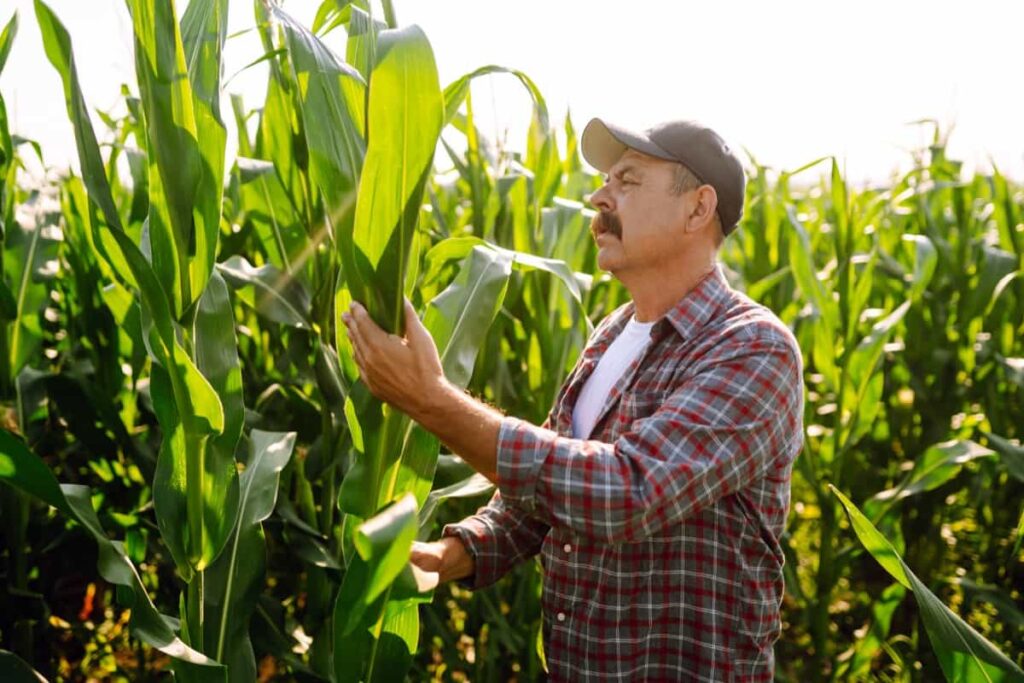
However, other crops like oats can also be used. The type of crop used determines the term used for the Silage, such as oatlage for oats and haylage for alfalfa. The method of making Silage depends on the available technology, local traditions, and the prevailing climate. Silage is stored in airtight conditions, often under plastic sheeting, to prevent spoilage and leaching of fermented juice.
Importance of Silage in Livestock Farming
- Silage is a cost-effective way to provide nutritious feed to livestock. It can be made from different crops, including those unsuitable for other types of animal feed.
- Silage has a longer shelf life compared to other forms of feed. Properly made and stored Silage can be fed to livestock for up to a year, reducing the need for frequent harvesting and storage.
- Silage is a source of energy and protein for animals. It contains a high level of digestible fiber, promoting gut and overall animal health.
- Silage can supplement feed during periods of low forage availability or poor weather conditions, ensuring that livestock receives adequate nutrition year-round.
- Silage can also improve milk production in dairy cows and weight gain in beef cattle.
Benefits of Making Silage
- Provides a cost-effective and reliable source of nutrition for livestock.
- Increases feed efficiency and reduces waste.
- Extends the shelf life of crops, reducing the need for frequent harvesting.
- It improves animal health and promotes weight gain and milk production.
- It can be made from different crops, making it a versatile feed option for livestock.
Common Fodder Crops for Silage Making
Common fodder crops used for silage-making include cereals like maize, sorghum, oats, and millets, legumes such as berseem, lucerne, and cowpea forages like napier and hybrid napier.
Silage Preparation Process / How to Make Silage for Livestock
- Choose the type of crop: Choose hybrid and annual plants that grow quickly and can be grown repeatedly. For making Silage, it’s a good idea to grow sorghum, maize, barley, oats, millet, or other grains.
- Choose a dry place: Choose a safe and dry place to dig a pit. The pit’s size, form, and dimensions depend on how much forage it can hold.
- Cut the greens: After you’ve made the pit, harvest it and cut it into little pieces with a chaff cutter. Make 1-inch pieces out of the greens.
- Cover the bottom: Cover the pit’s bottom with a polythene sheet to keep the greens from touching the earth. Cover all of the pit’s sides as well.
- Place the chopped greens: Then, into the pit, spread the chopped greens into a thin layer, and continue until one-third of the pit is covered.
- Sprinkle molasses: 1 liter of molasses should be diluted with 3 liters of water. And then, uniformly sprinkle the preserved greens with the solution. This feeds the microorganisms and speeds up the fermentation of the Silage.
- Press the greens: To force air out and protect the greens against fungal infection, press the greens with your foot or something heavy object.
- Add more greens: After pressing and making more places inside the pit. Repeat the molasses sprinkling and pressing. Continue until the pit is filled in a dread form.
- Cover the pit: Cover the top with a polythene sheet after the final pressing. Covering the top is critical to preventing water contact with the Silage, and if possible, build a short trench around the pit’s edges.
- Cover the pit with soil: Cover the top with dirt and polythene after pressing. This allows air to circulate and protects the polythene from damage caused by rain, birds, or other animals.
- Leave the pit: Leave the pit until fodder is scarce, as conservation through fermentation may take many weeks. However, you must wait at least two weeks before utilizing it. Silage produced in this manner can be stored for an extended period, typically up to two years.
- Using the Silage: To use the Silage, open the hole from the slope’s lower side. Take enough silage fodder for one day, then close the pit again. When you need Silage for your animals, repeat the process.
In case you missed it: The Ultimate Guide to Creating a Profitable Turmeric Farming Business Plan
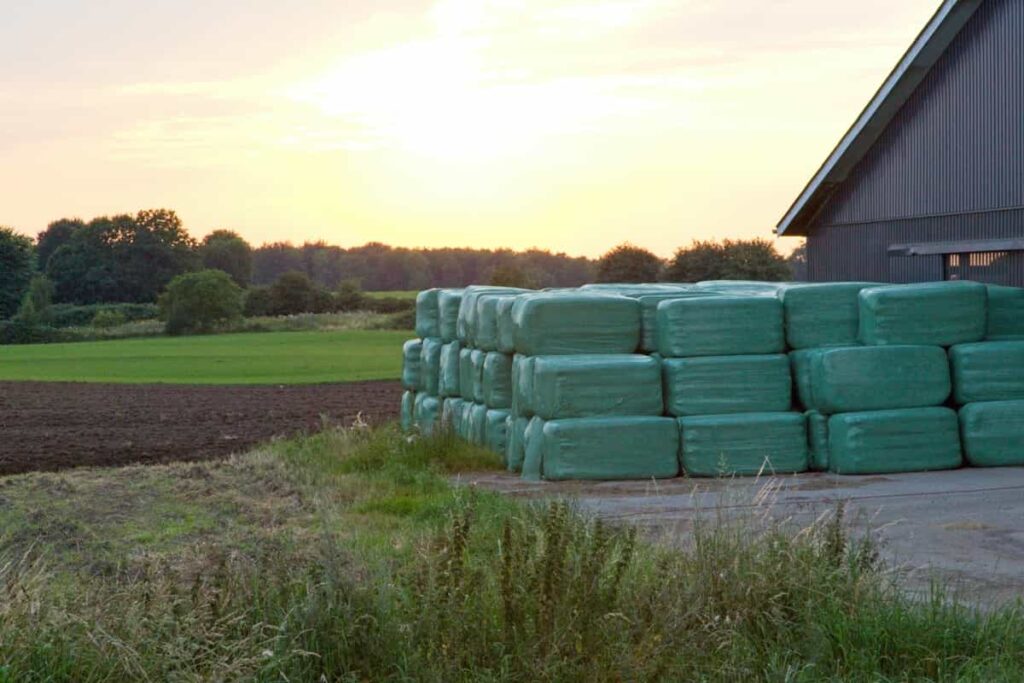
Nutrition Value in Silage for Livestock
- Silage provides a reliable and cost-effective source of nutrition for livestock and can be substituted for root crops.
- Silage increases feed efficiency and reduces waste.
- Silage acts as a natural preservative due to the production of volatile fatty acids (VFAs) during fermentation. These VFAs lower the pH and create a hostile environment for spoilage-causing bacteria.
- Silage fermentation can also produce vitamins, including folic acid and vitamin B12.
- The fermentation process yields energy that bacteria use, which is released as heat. While Silage may be slightly lower in caloric content than the original forage, its improved digestibility and preservation characteristics
Limitations of Silage Making
- The initial infrastructure required to set up silos increases investment.
- Mismanagement can lead to better-quality Silage, which animals may reject.
- Silage has less vitamin D than sun-dried hay.
Silage Feed Preparation Process for Goats
- Collect freshly cut grass when it’s still moist and has a high sugar content, ideally in the morning.
- Chop the grass into small pieces, about 0.5 inches or 1.3 cm, using a chopper or a machete.
- Pack the chopped grass tightly into a silo or container, filling it up to about 75% of its capacity.
- Add a silage inoculant containing lactic acid bacteria to speed up and improve fermentation.
- Cover the container with a plastic sheet to exclude as much oxygen as possible.
- Weigh down the plastic cover with rocks or tires to prevent it from being blown away by wind or animals.
- Allow the Silage to ferment for 21 to 30 days or until the pH drops to around 4-5.
- Open the silo or container and remove small amounts of Silage as needed, resealing it tightly after each use.
- Store the Silage in a cool, dry place to prevent spoilage, mold growth, and nutrient loss.
- Properly prepared and stored Silage can be fed to goats for 3-5 months.
- Goats must consume 2-5% of body weight fodder daily. For the average dairy goat, 3-4 pounds of Silage.
In case you missed it:
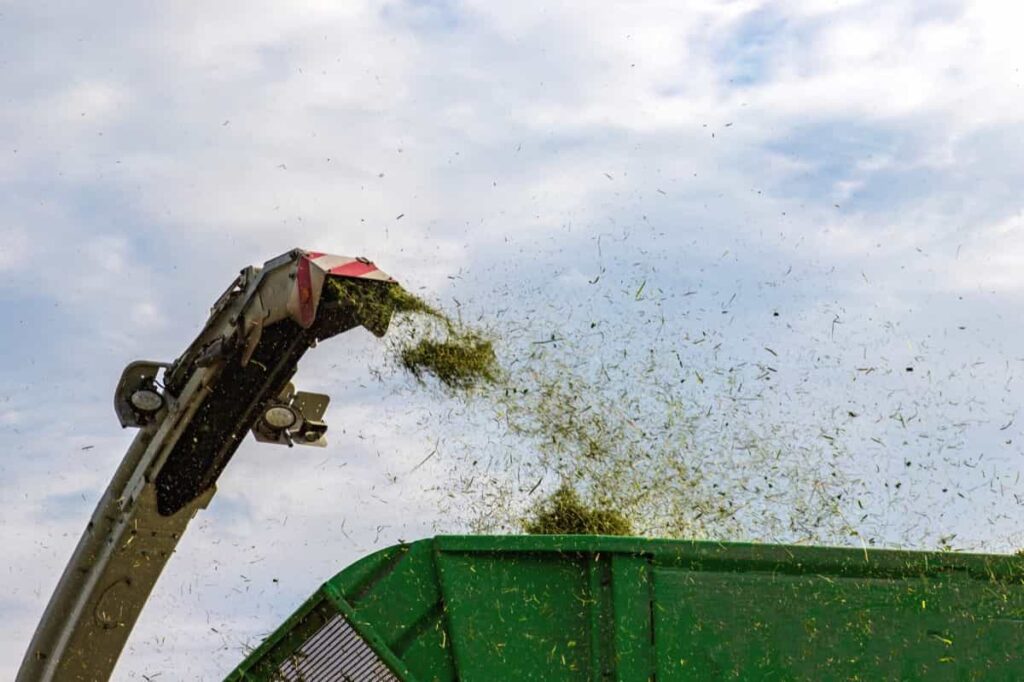
Silage Feed Preparation Process for Sheep
- Collect freshly cut grass when it’s still moist and has high sugar content.
- Chop the grass into small pieces using a chopper or a machete.
- Pack the chopped grass tightly into a silo or container.
- Cover the container with a plastic sheet to exclude as much oxygen as possible.
- Weigh down the plastic cover with rocks or tires to prevent it from being blown away by wind or animals.
- Allow the Silage to ferment for several weeks or until the pH drops to around 4-5.
- Feed the Silage to sheep in small amounts, gradually increasing the quantity.
- Avoid feeding spoiled or moldy Silage to sheep, as it can cause digestive problems and other health issues.
Silage Feed Preparation Process for Pigs
Silage is a popular feed for pigs, especially during winter when pasture and other fresh forage may be scarce. To prepare Silage, crops like corn, grass, or alfalfa are chopped, packed tightly into a storage unit, and allowed to ferment. This process creates a nutritious and palatable feed that can be stored for months. When feeding pigs silage, it’s important to ensure it’s fresh and free from mold or other contaminants. Pigs generally consume 8 pounds(3-4kg) of feed per pig per day.
In case you missed it: How to Grow Pigeon Pea/Red Gram/Toor Dal: Cultivation Practices and Production Management
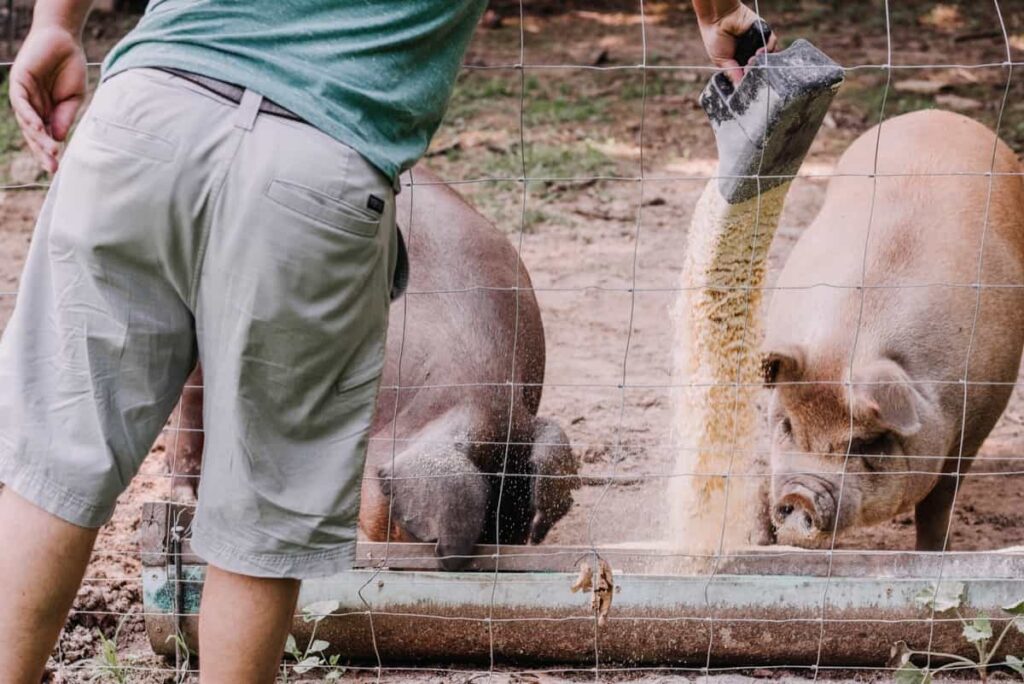
Silage Feed Preparation Process for Cows
Silage is an animal feed that ferments high-moisture fodder crops like corn, grass, and legumes. Making Silage involves chopping up the crops into small pieces and storing them in an airtight container, where natural bacteria break down the sugars and produce lactic acid. This process preserves the feed and enhances its nutritional value for dairy animals like cows.
Molasses, a good source of sugar, should be added to the chopped crop to provide the necessary soluble carbohydrates for organic acid production. The chopped and wilted crop with molasses should then be packed tightly into a silo or container and covered with airtight material to prevent air from entering and spoiling the Silage and generally given about 6 kg to 15 kg of Silage daily.
Silage Storage and Management
- Silage can be made from various plants, such as grass, corn, and alfalfa.
- The fermentation process typically takes 2-4 weeks, during which the silage temperature may rise due to microbial activity.
- It’s crucial to monitor the Silage’s pH level, as a pH below 4.2 inhibits the growth of undesirable microorganisms.
- Silage should be stored in a cool, dry place to prevent spoilage and mold growth.
- Feed out Silage in small amounts daily to avoid spoilage and feed waste.
- Silage that smells musty, has a slimy texture or appears discolored should not be fed to animals.
- Silage undergoes four stages in a silo: presealing, fermentation, infiltration, and emptying.
- During presealing, respiration and DM loss occur, stopping after a few days. Fermentation occurs over a few weeks, with a drop in pH, more DM loss, and breakdown of hemicellulose.
- Infiltration enables limited microbial respiration, causing the loss of available carbohydrates as heat and gas.
- Emptying causes additional loss as surface exposure increases.
In case you missed it: 50 Cow Dairy Farming Project Report: Profits, Setup Cost, and Bank Loan in India
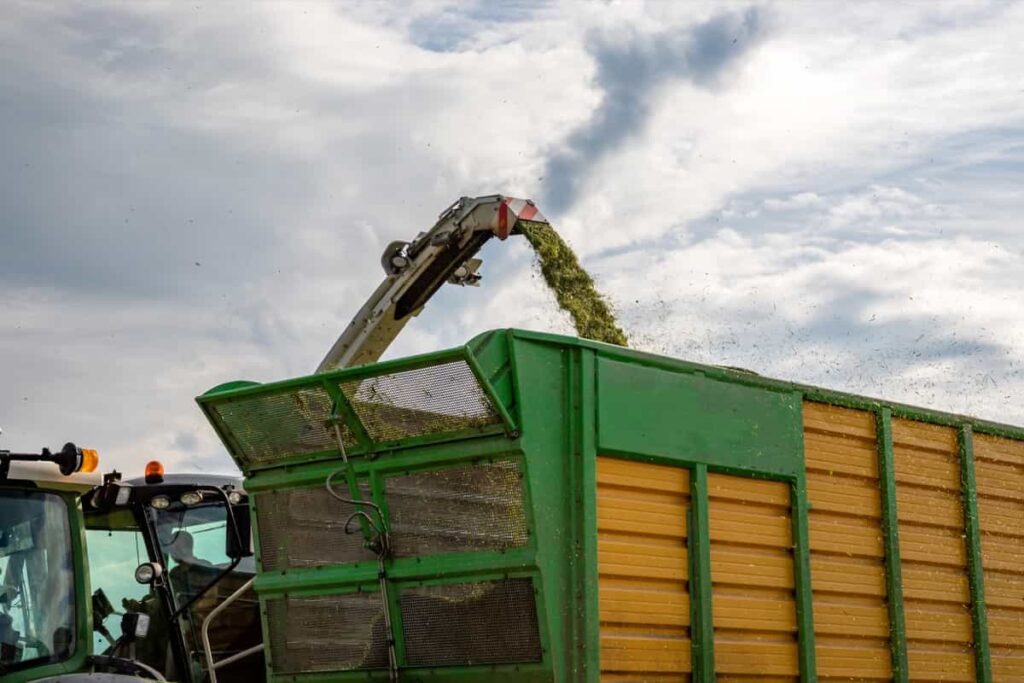
Tips and Techniques for Preservation of Silage
- Cut grass at the right stage of maturity, ideally when the moisture content is around 60-70%.
- To promote efficient fermentation, chop the grass into small pieces, about 0.5 inches or 1.3 cm.
- Pack the grass tightly into the silo or bales to exclude as much oxygen as possible.
- Cover the silo or bales with plastic sheeting to prevent oxygen infiltration.
- Use a silage inoculant containing lactic acid bacteria to speed up and improve fermentation.
- Monitor the pH of the Silage, aiming for a pH of 4-5, to ensure proper fermentation and prevent undesirable bacterial growth.
- Avoid exposing Silage to oxygen until it’s time to feed, and only remove small amounts of Silage at a time to minimize spoilage.
- Store silage in a cool, dry place to prevent mold growth and nutrient loss.
Business Plan for Silage for Livestock
- Executive summary: A brief overview of the business plan, including key objectives, target market, and financial projections.
- Market analysis: Research the market demand for Silage in the livestock industry. Determine the target market, competitors, and pricing strategy.
- Product offering: Detail the different types of silage products that will be offered, including the ingredients used, nutritional value, and benefits to livestock.
- Marketing and sales strategy: Identify the marketing channels that will be used to reach the target market, such as social media, advertising, and direct sales. Detail the pricing strategy and sales projections.
- Operational plan: Explain how the Silage will be produced, including the equipment needed, the process of harvesting, and storage.
- Management and organization: Outline the management structure and responsibilities of the team members, including the experience and skills required for each role.
- Financial plan: Detail the start-up costs, including equipment and production costs, and the revenue projections for the first year. Explain the funding sources, such as loans or investments, and the repayment plan.
- Risks and challenges: Identify the potential risks and challenges that may arise, such as changes in market demand or supply chain disruptions. Provide a plan for mitigating these risks.
In case you missed it: How to Start Sustainable Pig Farming: Business Plan, Benefits, and Requirements

Conclusion
Making Silage for livestock can be profitable for farmers, but it requires careful planning and execution. Proper preparation, storage, and feeding methods are crucial to ensure high-quality Silage that meets the nutritional needs of goats, sheep, pigs, and cows. With the right business plan and management practices, farmers can maximize their returns and provide their livestock with a consistent and nutritious feed source.
- How to Raise Pigs in Your Own Backyard: A Comprehensive Guide
- Budget Friendly Sheep Shed Ideas: Cheap and Low-Cost Tips
- How Much Do Cattle Farmers Make: Revenue Streams in Cattle Farming
- Management Pests and Diseases in Your Cotton Field
- Sheep Farming Business Plan for Beginners
- Aquaponic Farming at Home: A Step-By-Step Guide
- Profitable Village Farming Business Ideas in 2024
- High-Yield Aquaculture: Fast-Growing Fish for Farming
- Effective Fish Pond Construction Techniques for Beginners
- Irrigation and Water Management in Pineapple Farming
- Blossom to Harvest: Mastering Flowering and Pollination in Papaya Farming
- Pig Fattening Essentials: From Selection to Sale for Beginners
- Raising Wagyu Cattle: A Complete Guide for Premium Beef Production
- Soil Types and Their Water Holding Capacity
- Optimizing Irrigation Schedules for Coconut Groves for Enhanced Yield
- Espresso Your Garden: Coffee Grounds for Healthier Acid-Loving Plants
- The Best Soil Mix for Snake Plants: How to Mix Your Own Snake Plant Soil
- Green Thumb Success: Expert Tips for Cultivating Greenhouse Beans All Year Round
- Bloom All Year Round: The Ultimate Guide to Indoor Hyacinth Care
- Eco-Friendly Gardening: How to Make Liquid Fertilizer from Kitchen Waste
- Ultimate Guide to Grow Anise in Pots: Explore Seed Propagation to Harvesting
- Guide to Raising Chester White Pigs: Discover Breed Facts to Growth Management
- Mastering the Elegance: The Ultimate Guide to Weeping Cherry Tree Care, Planting, and Maintenance
- Ultimate Guide to Planting Garlic in Grow Bags: Growing Strategies for Beginners
- How to Fix Spider Plant Leaf-Related Problems: Natural and Organic Remedies
- 10 Reasons Why Your Tulsi Plant is Shedding Leaves: Home Remedies and Solutions
- Optimizing Growth and Yield: The Advantages of Palm Bunch Ash Fertilizer
- Utilizing Neem Oil Extract as a Natural Pesticide for Hydrangea
- From Soil to Harvest: Various Ways in Which Farmers Can Use AI Tools
- Steps to Encourage and Induce Citrus Flowers: A Comprehensive Guide
- How to Fix Snake Plant Leaf-Related Issues: Natural and Organic Remedies
- Transform Your Garden into a Fragrant Oasis with Raat Ki Rani (Night Blooming Jasmine)
- Discover the Ideal Chicken Breeds for Philippine Farms
- How to Create a Poultry Egg Farm Business Plan for Profits
- Grow Lemon Cucumbers Like a Pro: Insider Techniques for Bountiful Yields
- Ultimate Guide to Caring for Your Pink Princess Philodendron: Tips for Thriving Variegation
